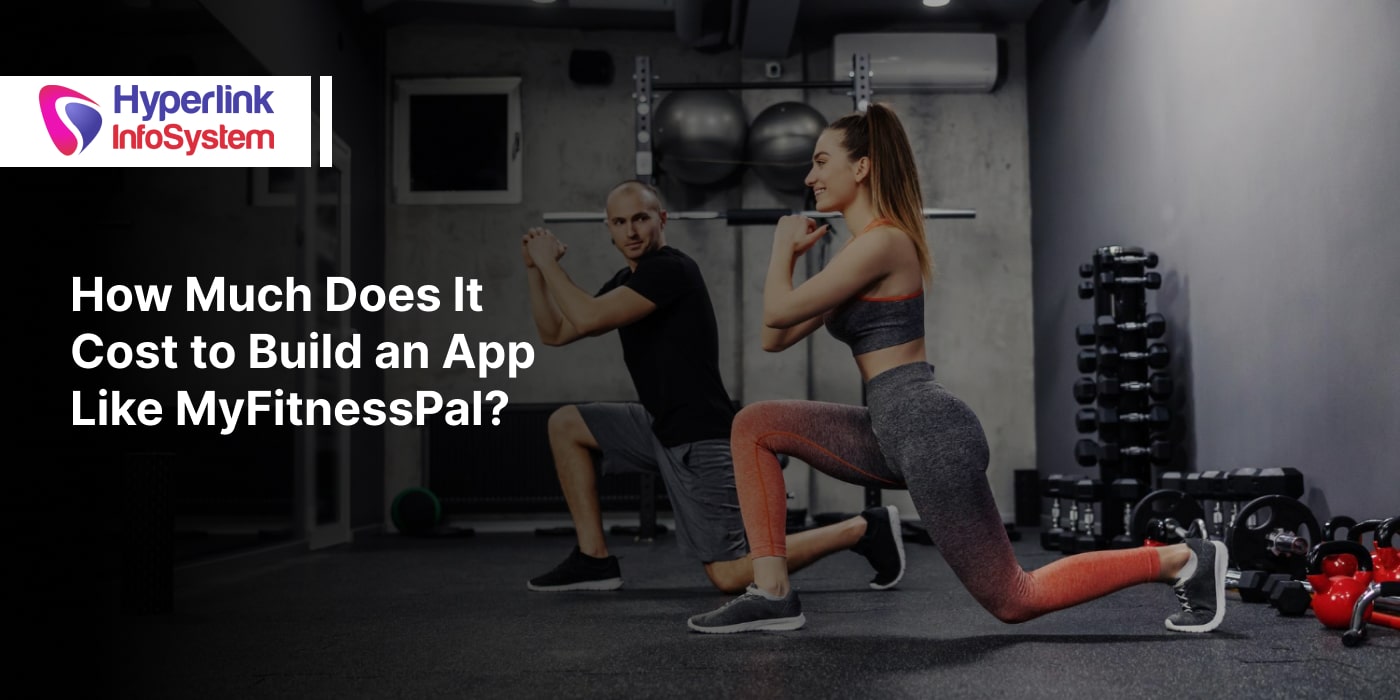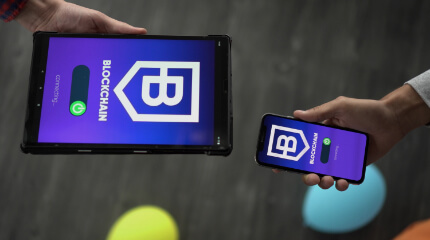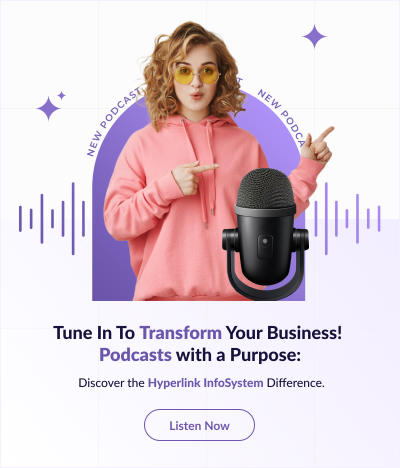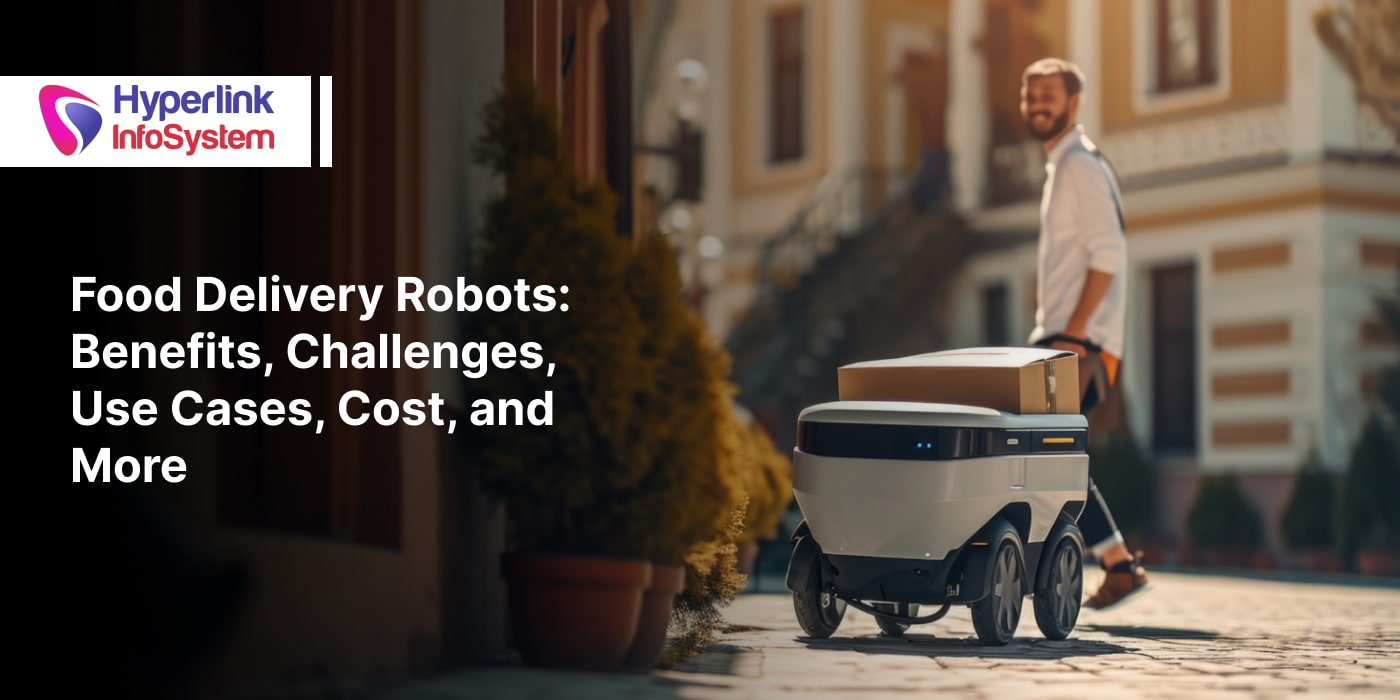How Much Does It Cost to Build an App Like MyFitnessPal?
Aug 2025

Are you a personal trainer, nutritionist, or health services provider looking to make it big? You know that creating an app like MyFitnessPal can help you broaden your reach, boost revenue, and gain valuable data insights. This blog serves as a detailed guide to creating an app like MyFitnessPal, covering essential factors, challenges, and more.
Obesity, hypertension, dengue, diabetes, cancer, and numerous other diseases are becoming increasingly prevalent today. While we may not be able to prevent all of these conditions, we can adopt healthy habits and engage in physical activities to enhance our quality of life. However, many individuals lack the motivation or guidance necessary to achieve their fitness and health goals.
With specialized applications, individuals can achieve these goals without investing thousands of dollars in fad diets and personal trainers. Medical experts, nutritionists, and other professionals have the opportunity to create an app like MyFitnessPal, enhancing the lives of countless users while simultaneously generating revenue.
The global sports and fitness app market is estimated to reach a value of US$10.32 billion by 2025 and is projected to grow to US$26.48 billion by 2032. Whether it's hardcore gym goers, yoga enthusiasts, marathon runners, or individuals seeking to adopt a healthier lifestyle, a fitness app like MyFitnessPal can meet a wide range of needs.
Encouraged by the success of these applications, many companies and aspiring entrepreneurs may be eager to join the trend. However, these individuals must understand that developing such applications necessitates a structured and well-considered strategy.
Depending on the target market, the type of health app, the features included, and various other factors, the costs to develop an app like MyFitnessPal can range from hundreds of thousands to millions of dollars. In addition to costs, this blog will also explore other aspects related to fitness app development. Let’s dive right in.
Why Build a Fitness App Like MyFitnessPal?
Mike Lee and Albert Lee launched MyFitnessPal in 2005. Although the journey was not without challenges, they have since acquired over 200 million users across 120 different countries. According to research, MyFitnessPal ranks among the most popular fitness and sports mobile applications, generating over $16 million in revenue through in-app purchases. The fitness, health, and sports app market holds significant potential for growth.
5 Reasons to Create an App Like MyFitnessPal
Below are some of the top reasons to create an app like MyFitnessPal.
1) Increased Health Consciousness (Post-Pandemic trend)
After the COVID-19 pandemic, individuals have become more aware of their health, nutrition, and mental well-being.
Increased adoption of wearable devices, including fitness trackers, smartwatches, and health-monitoring gadgets, has driven the demand for digital health ecosystems.
2) Recurring Revenue Through Subscriptions
Robust monetization models that offer a combination of freemium and premium plans. These plans include tailored meal plans, calorie and vital sign monitors, AI coaching, and more.
Incorporating personalization and gamification elements leads to increased revenue and improved user retention.
3) Data Insights Provide a Strategic Advantage
Tapping into user insights related to food logs, exercise routines, and biometrics creates opportunities for the following:
- Personalized recommendations for diet, exercise routines, and more.
- Effective integration of artificial intelligence (AI) and machine learning to identify health issues, forecast future outcomes, and deliver pertinent training.
- Yields robust insights for healthcare, wellness brands, and insurance companies.
4) Interoperability With Wearables & APIs
Apps such as MyFitnessPal integrate seamlessly with Apple Health, Fitbit, Garmin, Google Fit, Samsung Health, and other platforms, depending on the platform.
This indicates that these applications are not standalone tools; instead, they are part of a vast ecosystem that encompasses fitness hardware, nutrition brands, and digital wellness services.
5) Market Gaps
Users seek to discover local food joints, regional cuisines, and specialized diets (such as keto, carnivore-only, and others) while benefiting from community support.
Creates opportunities to enter/differentiate in untouched regions/audiences.
Who Should Build Apps Like MyFitnessPal?
Just because health/fitness apps are popular does not mean they are the right choice for your business. However, certain types of businesses can benefit significantly from developing an app like MyFitnessPal.
1) Fitness Startups
Fitness apps that provide a centralized platform that offers training programs, diet plans, and performance tracking.
Example - A home workout app that collaborates with personal trainers to educate users on how to exercise at home using minimal equipment.
2) Healthcare and Wellness Brands
Gyms, nutrition brands, and telehealth platforms that want to increase their user base and engagement.
Gives members more value for their money through diet logs, consultations, or workout tips.
3) Insurance Companies
Encourages users to adopt a healthy diet and lifestyle to minimize claims.
Offer discounts or rewards to users for their activities. Examples of the same are - completing 10,000 steps per day, adhering to diet schedules, or increasing weights each season.
4) Food and Meal Prep Services
Companies can develop apps to recommend the right products to users, enable calorie/macro tracking, or deliver hot/healthy meals.
5) AI or Healthtech Innovators
Provide AI-powered tailored services that include custom meal plans, mental health assessments, strength training schedules, and more.
A fitness/health app collects massive volumes of data that influence user activity, calorie intake, and more. This information allows the app to deliver personalized services, identify potential health risks, and encourage users to improve their well-being.
6) Education and Corporate Wellness Programs
Schools, colleges, and corporate organizations can rebrand and customize the app to meet their specific objectives.
This system enables effective tracking of various metrics, including diet, calories burned, weight lifted, and more.
Promotes the development of healthier lifestyle habits over the long term.
Advanced Features in an App like MyFitnessPal
Calorie and heart rate tracking are standard features in most health/fitness apps. However, the applications that truly stand out offer more than just these basic functionalities. Below are some of the state-of-the-art features found in premium apps such as MyFitnessPal.
1) Massive Database With User Inputs
- 18 million food items, including both regional and branded products.
- Enables smart search through barcode scanning and optical character recognition (OCR).
- Allows users to add custom meals and recipes for others to explore.
- Includes verified entries to ensure accuracy.
2) Nutrient-Level Tracking
- Goes beyond the regular calorie tracking.
- Tracks 80+ nutrients, including fiber, sugar, iron, sodium, cholesterol, and more.
- Provides a comprehensive breakdown of macronutrients, expressed in grams or as a percentage.
- Customizes nutrients and goals based on diet types such as keto, vegetarian, vegan, or carnivore-focused.
3) Real-Time Sync With Wearables
- Automatically synchronizes with devices and wearables such as Apple Health, Fitbit, Garmin, and others.
- This system passively tracks data from wearable devices, eliminating the need for users to enter details related to calories, steps, weights lifted, and more.
- Updates details on all devices without any delay.
4) Meal Scan
- Uses AI to identify meals using a smartphone camera.
- Minimizes the need for manual food logging while enhancing speed and productivity.
- Over time, the AI model learns to identify common meals with increasing accuracy.
5) Social Accountability and Community Forums
- Enables users to collaborate with friends, family, and workout partners to share goals, progress, meal plans, and more.
- Active community forums where users can seek guidance and support related to their fitness and health goals. These forums can provide tips and advice on weight loss, strength training, disease management, and more.
- Users can view their friend/partner’s progress, motivating them to strive for greater achievements.
6) Smart Insights and Predictive Feedback
- Generates personalized activity and behavioral reports. For instance, it informs users if they consume excessive alcohol on weekends or too much caffeine on Thursdays.
- Provides progress-based insights and informs users whether they are on/off track or off track in achieving their goals.
- Machine learning tools predict trends related to weight gain and the likelihood of skipping gym sessions on weekends based on recent behaviors.
7) Robust Third-Party App Ecosystem
- Integrates with numerous applications, including Strava and MapMyRun.
- This integration enables seamless data transfer to MyFitnessPal, eliminating the need for users to enter information manually.
8) Custom Reminders
- Sends out timely reminders based on user history. For instance, if a user frequently forgets to log their snack details, the app may prompt them with a reminder: Log your snack details now?
- Helps users customize and keep track of their meal schedules, regardless of their complexity. Whether following a vegan diet, practicing intermittent fasting, or addressing other dietary needs, the app offers robust customization options.
9) Historical Trend Visualization
- Allows viewers to access a summary of their daily, weekly, or monthly activities, including workouts, meals, and more.
- Facilitates data exports for personal or medical purposes.
10 Common Types of Fitness Apps
Below are some of the common types of health/fitness apps. Every app is designed for a particular purpose.
- Workout Tracker Apps - Log and monitor sets, repetitions, and various parameters within workout routines.
- Nutrition and Diet Apps - Track Meals, Calories, and Nutrients
- Meditation and Mindfulness Apps - Designed to Enhance Users' Mental Well-Being and Alleviate Stress.
- Sleep Tracker Apps - Monitors users’ sleep patterns and quality.
- Pedometer Apps - Track Your Steps and Daily Movements
- Fitness Trainer Apps - Offers guided workouts and custom workout plans.
- Yoga Apps - Guide users on performing yoga poses and stretching exercises.
- Health Monitoring Apps - Track vital signs such as heart rate, glucose levels, blood pressure, and more.
- Habit Tracker Apps - Ensuring Users Adopt and Maintain Healthy Habits
- Women's Health Apps - Tracking Menstrual Cycles, Fertility, and Overall Wellness in Women.
8 Factors Influencing the Cost of Building an App like MyFitnessPal
The cost to build an app like MyFitnessPal varies based on several factors. These factors include the type of app, its complexity, the features included, integration requirements, and more. Generally, the development cost for an app like MyFitnessPal can range from $80,000 to over $300,000. Below are some of the most critical factors that businesses should consider before embarking on the development of an app like MyFitnessPal.
1) App Complexity
The more complex the application, the higher the associated costs. It doesn’t take rocket science to understand this. However, companies often struggle to grasp these costs. Even the projected costs can fluctuate during development. Even the development process. Remarkably, even the simplest app can lead to substantial expenditures.
The key to effectively managing these costs is to understand market demands, user preferences, and specific requirements, all while considering the type of business involved. Below is an approximate breakdown of app development costs categorized by complexity.
|
App Complexity |
Estimated Timelines |
Approximate Cost (USD) |
|
Simple App |
1 to 2 Months |
$5,000 - $15,000 |
|
Standard App |
3 to 5 Months |
$25,000 - $60,000 |
|
Complex App |
6 to 12 Months |
$100,000 - $300,000+ |
These figures are just to give you an approximate idea. Consult a professional fitness app development company for more details.
2) App Features
The choice of features in the app also matters. Creating an app with basic features like user onboarding, activity and nutrition tracking, goal setting, and notifications may be relatively inexpensive. However, as you incorporate more advanced features, the costs increase. This is the price that companies have to pay in order to make the app more interactive, integrated, and personalized.
Examples of complex features include AI-powered suggestions, macro training, and dynamic workout plans. These features require custom logic, which in turn increases both development time and costs. Furthermore, incorporating additional features results in more screens, workflows, and interactions, requiring UI/UX designers and front-end developers to invest extra effort. This illustrates the direct correlation between the number of app features and overall costs.
Below is an approximate breakdown of the costs that companies may incur when developing an app like MyFitnessPal.
|
Features |
Estimated Cost in USD |
|
UI/UX Design |
$8,000 - $20,000 |
|
User Authentication & Profile |
$4,000 - $8,000 |
|
Food & Calorie Database Integration |
$15,000 - $30,000 |
|
Barcode Scanner (ML/third-party API) |
$3,000 - $7,000 |
|
Nutrition Logging System |
$7,000 - $12,000 |
|
Exercise Tracker and Wearable Integration |
$10,000 - $20,000 |
|
Goal Setting & Analytics |
$6,000 - $10,000 |
|
Community/Social Features |
$10,000 - $18,000 |
|
Notifications and Reminders |
$3,000 - $6,000 |
|
Backend Development (Cloud-Based and Scalable) |
$25,000 - $50,000 |
|
Admin Dashboard (Web) |
$6,000 - $12,000 |
|
Testing & QA (manual and automation) |
$8,000 - $15,000 |
|
Project Management |
$6,000 - $10,000 |
3) Platform Choice
Platform choice of platform significantly influences the costs associated with developing an app like MyFitnessPal. Selecting between iOS, Android, web, or cross-platform options for your fitness application also affects other critical decisions, such as the technology stack, team structure, time to market, and maintenance requirements.
Native app development necessitates the creation and maintenance of two distinct applications, which can be more expensive and time-consuming. Conversely, cross-platform development for health apps is typically 20 to 25 percent less expensive than native development; however, when incorporating high-performance features, the costs shoot up instantly.
Overall, cross-platform development is more cost-effective; however, it may not provide the same level of performance or seamless integration as native APIs. The choice of platform also impacts the launch and deployment process, as companies must adhere to various submission procedures, policies, and legal requirements. Therefore, selecting a platform is not just a technical decision; it influences the overall cost, initial design, and ongoing maintenance.
|
Platform |
Development Costs |
Additional Notes |
|
Native iOS Only |
$45,000 - $80,000 |
MVP to advanced feature sets |
|
Native Android Only |
$45,000 - $80,000 |
Similar to iOS |
|
Both Native |
$80,000 - $140,000+ |
Separate teams increase costs |
|
Cross-Platform Development (Flutter/React Native) |
$60,000 - $100,000+ |
Single team, faster app time-to-market |
4) Design Complexity
The overall cost of designing an app like MyFitnessPal is significantly influenced by the complexity of the design. A simple design featuring minimal screens, basic layouts, and standard UI components is easier to develop; however, this does not apply to an app like MyFitnessPal. Such an app requires customized dashboards, animated progress charts, multiple screen types, onboarding flows, gamification elements, and additional features.
For each feature, designers have to put in additional effort into custom design, wireframing, prototyping, and user testing. MyFitnessPal boasts over 50 screens, each with distinct features like logged-in/logged-out states, error/loading/success screens, as well as pop-ups, overlays, and models. Furthermore, developing various user roles and journeys requires unique navigation flows and UI designs tailored to specific goals. User roles include free users, premium subscribers, and admin panels.
Integrations, animations, and microinteractions contribute significantly to the overall design costs. Below is a table that outlines the design expenses associated with developing an app like MyFitnessPal.
|
Design Phase |
Scope |
Estimated Cost (USD) in 2025 |
|
Product Research and UX Strategy |
User research, persona development, competitive audit, and journey mapping |
$5,000 - $10,000 |
|
Wireframing |
Low-fidelity wireframes for 5o to 70 screens |
$8,000 - $15,000 |
|
High-Fidelity UI Design |
Full UI mockups for all screens, dark/light themes, and responsive states |
$12,000 - $25,000 |
|
Design System |
Component library and UI kit |
$5,000 - $12,000 |
|
Prototyping & User Testing |
Clickable prototypes for testing and iteration |
$4,000 - $8,000 |
|
Motion & Microinteraction Design |
Animated transitions, loading states, and input feedback |
$3,000 - $7,000 |
|
Accessibility and Localization Prep |
Alt text, contrast testing, scalable UI, and RTL readiness. |
$3,000 - $6,000 |
The design cost for an app like MyFitnessPal can be anywhere from $40,000 to $83,000. Hire dedicated app developers in India for your next project.
5) Development Team Size and Location
Development team size and location are also important factors influencing the costs associated with developing an app like MyFitnessPal. Development firms in the USA, UK, and Europe typically charge higher rates for app creation due to prevailing wage levels and the availability of experienced talent. While these companies are likely to deliver exceptional results, the expenses can be daunting for small and medium-sized enterprises.
Compared to development companies in Western countries, the top app development companies in India, Latin America, and Asia offer cost-effective services without compromising on quality. Developing a complex and feature-rich application, such as MyFitnessPal, typically requires between 1,200 and 1,500 work hours. Below is a comparison of development costs across various geographical locations. Hire app developers with the necessary skills and experience to ensure the success of your project.
|
Region |
Hourly Rate (2025) |
Estimated Cost (USD) |
Notes |
|
North America |
$120 - $180/hour |
$150,000 - $250,000 |
High-quality services with the fastest turnaround time |
|
Western Europe (UK, Germany, France) |
$100 - $160/hour |
$130,000 - $220,000 |
Top agencies with fluent English communication |
|
Eastern Europe (Poland, Ukraine, Romania) |
$40 - $70/hour |
$60,000 - $110,000 |
Reasonable price and quality |
|
India |
$20 - $50/hour |
$40,000 - $80,000 |
Cost-effective and growing talent pool |
|
Latin America |
$20 - $50/hour |
$45,000 - $90,000 |
Nearshore option for US clients |
|
Southeast Asia |
$20 - $40/hour |
$35,000 - $70,000 |
Affordable, but potential time zone friction |
6) Tech Stack
The choice of a technology stack is an important consideration, as it impacts app development costs not only in the short term but throughout the app's entire lifecycle. Certain technology stacks are more developer-friendly, providing superior documentation, support, and libraries, which can significantly reduce development time and effort. Suppose a specific programming language or framework is in high demand. In that case, it becomes easier to find qualified developers, thereby decreasing hiring time and associated costs.
Similarly, certain technology stacks are more suitable for building scalable applications that can manage high traffic and substantial data loads. Selecting an inappropriate technology stack may force companies to face costly re-engineering expenses in the future. The choice of technology stack also impacts application maintainability, future-proofing, integration capabilities, and security requirements. Below is a rough estimate of the costs associated with the technology stack when developing an app like MyFitnessPal. Hire dedicated app developers to create a comparable app for your organization.
|
Component |
Tech Stack |
Estimated Cost (USD) |
Summary |
|
Backend |
Node.js / Python / Ruby on Rails |
$10,000 - $25,000 |
Core APIs, auth, data logic. Higher costs with ML integration |
|
Frontend |
Swift/Kotler/Futter |
$12,000 - $30,000 |
Cross-platform saves time. Native requires more effort. |
|
Database |
PostgreSQL/MongoDB/Firebase |
$3,000 - $10,000 |
Firebase is faster. SQL/NoSQL needs more custom setup |
|
AI/ML Features |
TensorFlow Lite/CoreML |
$8,000 - $20,000 |
Depends on feature depth |
|
API Integrations |
Apple Health, Google Fit, Food APIs |
$5,000 - $12,000 |
Each API adds time. Wearables are more complex. |
|
Cloud Hosting |
AWS/GCP/Firebase Hosting |
$2,000 - $8,000 |
Covers setup and basic scaling for the first year |
|
Security and Compliance |
OAuth2, JWT, HIPAA/GDPR |
$4,000 - $10,000 |
Required for health data. Legal compliance adds scope. |
|
Testing & QA |
Selenium, Appium, XCTest, Espresso |
$4,000 - $10,000 |
More features mean more test cases. Automation controls costs. |
|
DevOps and CI/CD |
Docker, GitHub, Actions, Jenkins |
$2,000 - $5,000 |
Automates deployment and reduces long-term friction |
7) Security and Compliance
Depending on the sector, security and compliance costs can accumulate significantly for organizations. Ensuring adherence to relevant regulations such as HIPAA (U.S.), GDPR (EU), and DPDP (India) requires companies to implement measures including encryption, audit trails, and access controls. Maintaining high security standards fosters user trust, but at the same time, companies are also compelled to invest heavily in secure APIs, monitoring systems, and secure authentication.
Health and fitness applications that store protected health information must implement HIPAA-compliant services, which tend to be more costly than standard hosting servers. Additional expenses may include security vetting (for health devices and fitness trackers) and licensing fees for data sharing. Companies that do not adhere to these regulations could face fines amounting to millions of dollars.
Below are some of the security and compliance-related costs that companies may incur when developing an app like MyFitnessPal.
|
Category |
Estimated Costs (USD) |
Summary |
|
Data Encryption |
$2,000 - $5,000 |
TLS/SSL, AES-256 encryption |
|
Auth and Access Control |
$3,000 - $8,000 |
Two-factor authentication, OAuth2, and biometrics |
|
Compliance Tools |
$5,000 - $12,000 |
HIPAA/GDPR audit readiness |
|
Legal Consultation |
$3,000 - $10,000 |
Privacy policies and regional compliance |
|
Compliant Infrastructure |
$7,000 - $15,000 |
AWS/GCP HIPAA/GDPR setup |
|
Penetration Testing |
$4,000 - $10,000 |
Annual third-party security testing |
|
Secure API Dev |
$3,000 - $7,000 |
Token-based, encrypted APIs |
|
Monitoring Tools |
$2,000 - $6,000/year |
Security alerting and logging tools |
|
Data Backup |
$1,000 - $3,000 |
Encrypted and geo-redundant backups |
|
Compliance Maintenance |
$2,000 - $4,000/year |
Policy updates and recertifications |
8) Testing and QA
Companies cannot overlook app testing, as it identifies bugs early and minimizes costly bug fixes or app store rejections. Additionally, robust quality assurance (QA) and testing ensure the app functions seamlessly across multiple devices, wearables, and screen sizes.
High-demand applications like MyFitnessPal manage substantial volumes of data related to users' health and nutrition. Therefore, the app must undergo rigorous security testing, as well as checks for GDPR and HIPAA compliance, and secure API validation.
Following all of the steps outlined above will lead to improved performance, increased downloads, and enhanced customer retention; however, it also incurs additional costs. A breakdown of these costs is provided below.
|
Testing Component |
Estimated Costs (USD) |
|
Manual Testing (Functional, UI/UX) |
$5,000 - $10,000 |
|
Automated Testing (Unit, Integration, UI) |
$7,000 - $15,000 |
|
Performance Testing |
$2,000 - $4,000 |
|
Security Testing & Compliance |
$3,000 - $7,000 |
|
API Testing (Backend Integration) |
$2,000 - $4,000 |
|
Cross-Device & Cross-Browser Testing |
$1,500 - $3,000 |
|
QA Team (2 to 3 professionals) |
$6,000 - $12,000/Month |
|
Beta Testing (Staged Rollouts) |
$1,000 - $2,000 |
|
Testing/Tools and Infrastructure |
$1,000 - $3,000 |
6 Challenges Faced while Building an App Like MyFitnessPal
Below are some of the most formidable challenges that companies face while building an app like MyFitnessPal.
|
Challenge |
Solution |
|
Difficult to maintain a comprehensive and dependable food list |
Use crowd-sourced data that is moderated, along with trusted APIs such as those provided by the USDA. |
|
Users may discontinue tracking after some days. |
To enhance engagement, incorporate reminders, streaks, and gamification elements. |
|
Users may require offline access. |
Store key data locally and synchronize it when an internet connection is available. |
|
Secure handling of users' personal health data |
Use encryption and adhere to HIPAA and GDPR. |
|
Third-party integration with wearables and fitness applications can present significant challenges. |
Use standardized APIs such as Google Fit or Apple HealthKit. |
|
Need for scalability as the application accommodates an increasing number of users and data. |
Leverage cloud services and scalable databases such as AWS. |
8 Ways to Monetize an App like MyFitnessPal in 2025
Below are ten ways to monetize an app like MyFitnessPal in 2025.
- Freemium Model: Provide free access to basic features and charge for premium tools like analytics or custom meal planning.
- Subscription Plans: Offer monthly, yearly pricing tiers where users can enjoy an ad-free experience and access exclusive content.
- In-App Purchases: Sell custom workout routines, diet plans, and wellness challenges.
- Ad Monetization: Integrate ads from reputed health brands for free users.
- Affiliate Marketing: Recommend supplements, fitness gear, premium programs, and partner services to earn hefty commissions.
- Brand Partnerships: Collaborate with fitness influencers, trainers, gyms, and supplement brands to produce engaging content.
- Data Licensing (With Consent): Sell anonymized fitness trend data to companies such as research or insurance firms.
- Wearable Integration: Offer paid features that sync with wearables, smartwatches, and fitness trackers to yield valuable insights.
Conclusion
The increasing awareness of health and fitness is a great opportunity for companies to capitalize on this trend by developing an advanced app like MyFitnessPal. This initiative not only benefits the companies but also enhances the lives of millions of individuals seeking to lead healthy and fulfilling lives. Creating a cutting-edge app like MyFitnessPal requires a structured and well-planned approach. From ideation to launch, companies must have a clear understanding of the duration of each stage and the resources required.
Since this is a long-term project, even minor delays or the unavailability of resources/tools can lead to increased costs, ultimately impacting overall profitability. Companies that do not possess the necessary resources or plan to develop an app like MyFitnessPal should consider partnering with a professional app development company.
Hyperlink InfoSystem is one of the top app development companies, with branches in India, Canada, the United States, and the United Kingdom. Through hard work, determination, and innovation, we have completed over 5,000 projects in the past decade. More than 2,000 clients can attest to our professionalism, commitment, and attention to detail. Contact one of our experts to discover how we can assist you.
Schedule a Consultation Now!
Frequently Asked Questions
Yes, the app can generate revenue from the very first year if the company executes its strategy effectively. Revenue potential is influenced by several factors, including the type of app, monetization strategy, size of the target audience, and marketing budget. A minimum viable product (MVP) app can earn anywhere from thousands to $25,000 in its first year. In the case of a well-known brand or an app backed by an influencer, revenue can exceed $1 million to $5 million within the first 12 months.
The healthcare and fitness app development market is highly competitive, with thousands of new applications launched daily. How can a company distinguish itself and stand out from the crowd? Below are the essential steps to create an app like MyFitnessPal and ensure long-term growth and success.
- Develop a comprehensive Minimum Viable Product (MVP) that includes user accounts and features such as food and activity tracking, along with analytics capabilities.
- Conduct competitor research and create a unique value proposition.
- Create mobile-first, gamified designs using Figma or Adobe XD.
- Ensure cost-effective development using languages such as Flutter, Python, and Node.js, along with open APIs.
- Deploy a lean, agile team to develop the Minimum Viable Product (MVP) within 8 to 12 weeks.
- Control costs by utilizing free hosting services and open-source tools.
- Conduct beta testing with actual users and make adjustments based on crash reports and engagement metrics.
- Launch the app on various app stores and promote it through influencer marketing and targeted advertisements.
- Enhance the platform by incorporating premium features over time and generating revenue through paid subscriptions.
The app should enable users to share their achievements and milestones to enhance engagement. Social sharing features will foster healthy competition, motivating users to improve their performance with each day/session.
When building an application like MyFitnessPal, it is essential to provide support for multiple languages to achieve a global reach. Companies can accomplish this objective by implementing the following strategies.
- Using localization tools such as Flutter's intl package or the localization APIs for Android and iOS to manage the text displayed in the application.
- The app should automatically detect the user's language or allow users to select their preferred language by adjusting their settings.
- Store the translations in separate files: one for English, one for Spanish, one for German, and so on.
Gather feedback through in-app surveys, customer reviews, and analytical tools like Appbot and GetReview.io.
Latest Blogs

Is BlockChain Technology Worth The H ...
Unfolds The Revolutionary & Versatility Of Blockchain Technology ...


IoT Technology - A Future In Making ...
Everything You Need To Know About IoT Technology ...

Feel Free to Contact Us!
We would be happy to hear from you, please fill in the form below or mail us your requirements on info@hyperlinkinfosystem.com
Hyperlink InfoSystem Bring Transformation For Global Businesses
Starting from listening to your business problems to delivering accurate solutions; we make sure to follow industry-specific standards and combine them with our technical knowledge, development expertise, and extensive research.
4500+
Apps Developed
1200+
Developers
2200+
Websites Designed
140+
Games Developed
120+
AI & IoT Solutions
2700+
Happy Clients
120+
Salesforce Solutions

40+
Data Science

















